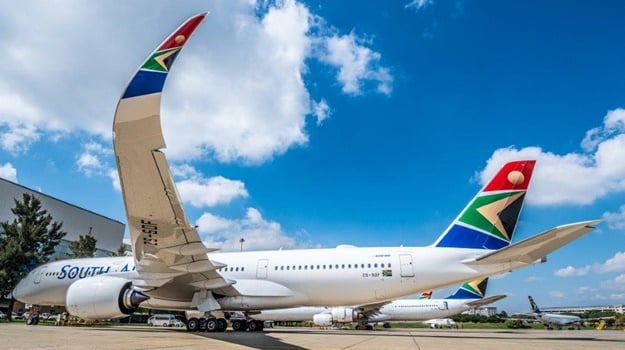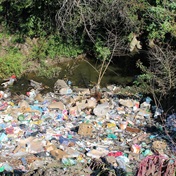
A few airlines have entered an equivalent of business rescue around the world. Virgin Australia is a messy tale of opportunity and re-entry; Comair in South Africa and Air Mauritius are sailing a similar boats, both are solvent and looking for ways to navigate a new ocean.
The premise of this strategy is to keep companies afloat, and systematically restructure service, operation and cost strategies. In SA, the hard bit is getting around to the broader aviation economy, airlines, jobs, and value chain while seeing through the mist of state-owned airlines.
Could a little more wind under the market’s wings go a long way?
Aviation kept afloat
Initial statements in response to Covid-19 from the International Air Transport Association highlighted the urgent need to support airlines directly and indirectly. This week IATA reported R2.1 trillion ($123 billion) in aid to airlines, R1.2 trillion ($67 billion) from governments through loans, deferred taxes, and loan guarantees and R906 billion ($52 billion) from banks, capital markets and lessors.
Some of the aid induces debt to rise by 28% at industry level, and airlines anticipate upward pressure on costs to adhere to hygiene, quarantine and service requirements. While potentially placing upward pressure on travel costs, the reinforcing loop should not come as a surprise.
Interestingly, these efforts vary from region to region. Africa and the Middle East only represent about R14 billion ($0.8 billion), equivalent to 1.1% of 2019 airline revenues, whereas the upper-tier range is between 10% and 25% globally. Aviation’s contribution to Africa’s GDP is expected to fall by R 488 billion ($28 billion), as traffic dips by 51%, positioning South African airlines at a loss of R52 billion ($3 billion) in revenue and risking a lower contribution to GDP, and gross value added. These estimates dwarf state interventions to South African Airways, they ruffle feathers, and call for some introspection.
Keeping private airlines afloat
Domestically, FlySAfair is probably worth looking out for. Not only because they’re an emerging low fare carrier with goals to expand amid a crisis, but also because they have been quite eager to re-enter into the market.
One executive does note, however, that the domestic aviation economy may need some indirect support highlight waving fees associated with public entities in the aviation industry (airports, navigation and weather services).
Comair, under business rescue, is an effort to restructure its portfolio of integrated services and products—and minimise risk. Although the level of integration poses some short-term risk until consumer confidence for travel and tourism returns, their interests in aircraft leasing, maintenance and technology (R&D) are probably their tickets to soaring in the medium to long-term. Accelerating the disposal of hanging firms would help.
Would aid be necessary for domestic carriers? It’s a complex consideration, but one worth exploring. The Lufthansa situation could be an example of the types of trade-offs governments are faced with, and how competitors and regulators may think about intervening. Internationally, commercial and state-owned airlines have a range of interventions embroiled with the relief mechanisms, and some are quite controversial (i.e. excitement to nationalise).
Buy a stake or guarantee loans, provide indirect medium-term relief or support wages, cushion some or incentivise competition—tough choices, among many more.
Executives and stakeholders could lobby for a specific direction, but as we’ve seen over the years regulators may have options to act, but doing nothing is among them. An assessment of the cost and benefits in either direction would enable a clearer path toward recovery, but not necessarily encourage a broader focus on developing the aviation industry.
Signs of state airline reforms
South African Airways is in a precarious position, which has posed some important debates regarding the role of the shareholder, and the commercial interests of the airline. The most recent position, uniquely emphasised the role of labour unions in the process of restructuring the airline.
An inevitable debate around what guides the rescue practitioners’ actions without a business rescue plan, the role of labour in their decision cycles and searching for judicial sense of direction. Signs of movement include the severing its relationship with Airlink, customers with bookings after 6 December 2019, will have tickets reissued and re-accommodated (083 SA8 tickets).
Signalling a positive future, SAA’s 26 May media statement indicates that the airline intends to continue services as customers holding unused tickets were informed that they will retain value until 24 March 2022. Furthermore, a recent Government Gazette reported that Seabury LLC, a globally leading aviation restructuring firm, is potentially involved in the process of restructuring SAA.
For SA Express, the course of a provisional liquidation application is under the DPE’s scrutiny and R1.2 billion was allocated in order to provide a resilient lifeline for the airline amid investigating irregular procurement, the pandemic resilience, and organisational reform. The depth and breadth of restructuring state-owned airlines weighs in the interrelationships between translating business rescue for commercial viability and ensuring stable development goals.
Potential for policy certainty
While the cost of government intervention doesn’t seem to yield financial results (in SA’s SOE airlines), it does yield important policy and business performance lessons. It will be up to the shareholder, and possibly the economic regulator, to enforce appropriate mechanisms to introduce transparent incentives and penalties if state intervention is to continue in future. Fair competition, incentives, and a healthy relationship between public and private sector are an essential part of the recovery process.
Elyse Maltin argues that partnerships in business require good quality relationships that contracts cannot represent, and each partner should be open to articulate their and transparently negotiate a mutually beneficial path toward success.
Much more important than policy is an agreeable direction for the aviation market. To achieve this, transparent alignment across organisation’s design, customer service, cost structure and shareholder needs are essential, in addition to frequent business performance reporting.
On the other hand, consistency with the Domestic Air Transport Policy implies non-state-involvement and may for some circles be the most attractive position in future. In this frame, any aid to state-owned airlines related to the pandemic could easily be interpreted outside of the norm because of the aviation-wide effects of the pandemic.
In this case it is plausible that what applies to one, could apply to all, especially when a market halts because of presidential instructions to prevent infections. Same frame and two lenses, make it hard to see which paths regulators could take.
As the economy slowly reopens in search of a new horizon through Covid-19’s persistent clouds of uncertainty, here’s two questions from me. Could this winter offer some semblance of policy certainty about the extent to which state-owned airlines’ business models would be taught to the tune of the broader aviation market? What tune could that be?




 Publications
Publications
 Partners
Partners











